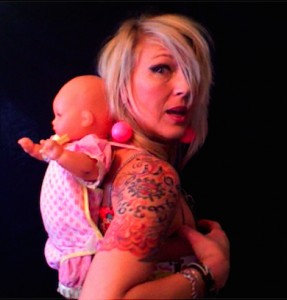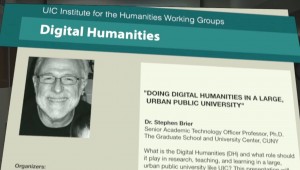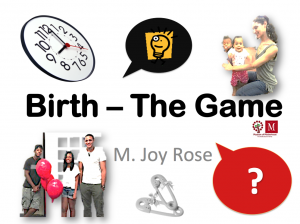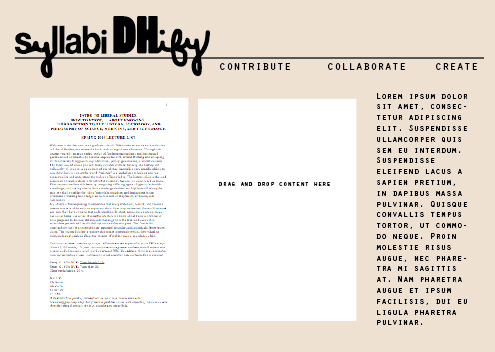We are all works in progress, eh?
I know I’ve brainstormed on no less than five projects during the last few weeks. But, each time I say them out loud or bring them to a meeting w/Steve or Matt they just don’t seem “quite right.”
This weekend I wrote a 15 page paper about “Oral Histories,” but it ended up not being to my liking. This class however, I do like.
Perhaps that’s why I’ve spent so much time experimenting.
Here is a project report.
I only have one more day to see what I’m going to pitch — I promise to ONLY pitch one!
But, if anyone has feedback I WOULD BE TOTALLY GRATEFUL.
PROJECTS:

PITCH 1.
PROJECT – Mapping Electric Mommyland [Link to project posted on my BLOG]
As part of my thesis I trace the efforts of Mom Rockers across several continents–as they play instruments, write songs, and create community. I argue this community metamorphosed into “everything mom” recognized today in the context of “mommy bloggers,” “The Housewives of Beverly Hills,” and “Rita Rocks,” among other things. The movement formed organically as a source of empowerment and connection, in the late 1900s. Within four years an assimilation process began. By 2006 motherhood was being used to sell everything from sex, to diapers and dishwashers. The purpose of my thesis, “Electric Mommyland; Writing History Through Ethnographical Art and Music Performance Towards a Deeper Understanding of Everything Mom,” is intended to mark a time in history, when HER-story was on the rise. This project was inspired by RaveArchive and the aim would be to exhibit aspects of MOM music, culture, and history in an interactive digital format.
Article: http://www.bbc.co.uk/news/magazine-15625457
– OR –

PITCH 2.
CUNYspeaks!
Communication between students at the Graduate Center can be challenging. Blackboard is not an interactive technology. Students can find access to resources in multiple locations but not have good tools to correspond with each other outside the classroom. I propose a project that standardizes an Academic Commons web template, and puts it in the hands of even the most technologically challenged group. These will be called CUNYspeaks! websites and they will allow every student, within every class, to interact with each other. I built a sample experimental website here: [LINK]
– OR –

PITCH 3
CUNYspeaks!
The Graduate Center currently has no repository for oral history. Inspired by the New York Public Library initiatives, and the Columbia University Archives, I argue that the Graduate Center should do more to capture the passionate and authentic voices of the distinguished professors, staff, and students who comprise it. CUNYspeaks! will introduce students to the Graduate Center by way of an oral history project that situates itself within the larger New York community. I built a sample oral history page here: [LINK]
Oral History Research: NYPublic Library http://oralhistory.nypl.org/
– OR –

PITCH 4
PROJECT – Birth; The Game
Birth; The Game is an online game that engages users in a pre-and post-conception interactive journey. Players are prompted to answer questions and make decisions that lead to unexpected outcomes. Birth the game is meant to educate users about the facts of life while inspiring them to engage in thoughtful responses. Gamers are linked to texts, images, academic interdisciplinary perspectives, and real-life resources. These are designed to enhance intersections between contemporary academic discourse and users within the sciences, arts, and history of birth and caregiving. Designed as an app and as interactive web portal meant to increase digital assets in the area of biology, history, sociology, economics, feminism, and “Mother Studies;” Birth-The Game aims to increase public engagement. The aim is to make this information widely available, accessible and appealing, in a fun, collaborative way as it pertains to human births, animal births, and the Digital Humanities. I built a sample experimental website here, but did not finish it: [LINK]
It is now possible to have a virtual baby online. This weekend I registered for an embryo that is now growing in/on my cell phone, and signed up to play “Virtual Families.
Great example: http://www.ardeaarts.org/birthBeta/
Better Birth through Games Book Sources: http://www.igi-global.com/article/better-birth-through-games/93028, Digital Birth: http://citris-uc.org/health/project/digital-birth, http://www.nucleuscatalog.com/normal-vaginal-birth-childbirth/view-item?ItemID=1614
-OR-
PITCH 5
PROJECT – Conferences in a Box or ConferenceCommons.org
How many times have you gone to an academic conference, met lots of great people and heard amazing presentations? Then—poof; its over, without a trace. Conferences in a Box is envisioned as a complete web-package resource that hosts and posts attendees names, contact information, presentation titles, social media feeds while directing twitter feeds throughout the event. It will also archive power-point presentations, and offer live-feed video through a password-protected portal post-event. Streamlining content, increasing availability, and preserving access to materials and resources, are the goals of this offering. By using new digital modes of publication Conferences in a Box hopes to set a higher bar for the dissemination of humanities scholarship.
Example: ER&L (http://electroniclibrarian.org/conference-info/, http://www.psav.com) not well maintained. Only includes one conference. I would hope to have a site like HASTAC that is ONLY all about conferences.









